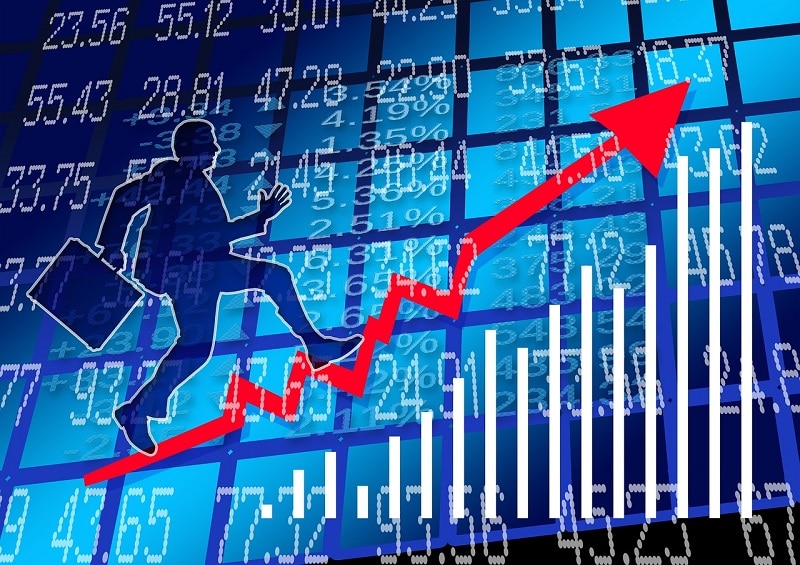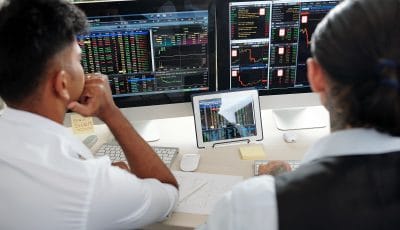
There are a few essentials elements that all successful traders share. There are only a few, but you MUST have them in order to be a good trader.
Understanding the below mentioned trading essentials are mandatory for proper trading education
1) An IDEA or “edge” over your competition
2) A TRADING PLAN
3) A GOOD MONEY MANAGEMENT PLAN
4) SELF DISCIPLINE
5) COUNTLESS HOURS OF EXPERIENCE
We need to take a few moments to look at each of these elements individually
1. Your Idea or Edge

Every trader needs to come up with an idea of how he can win more times than he loses. This is one area where many traders fail. They sell themselves short by accepting the premise that they cannot devise a specific plan or “formula” with which they can beat the market. It is important to recognize that some successful traders believe that arbitrary entries could be profitable, as long as a sound money management plan and exit strategy are adhered to properly. So though an “edge” is important, it is not the sole factor that makes or breaks your approach.
When searching for the “edge” that will work for you, should remember two things of importance. Your chance for developing the best idea increases exponentially as you increase your time observing the markets. (i.e. the more time you spend in front of your trading platform, the more likely you will begin to notice patterns that work for you). The other important idea is to keep your premise simple. Rely on an idea that is easy to understand and makes intuitive sense. Many traders rely on indicators as a trigger such as moving averages, bollinger bands, MACD, etc. An example of an edge utilizing this approach might be that a trader plots short term (10 minute) moving averages and sells when his market trades below that average and buys when it trades above. Other traders may avoid indicators altogether and look at charting directly and develop theories based on when they believe a breakout (or breakdown) is most likely to happen. This often involves price movement in coordination with volume change. As an example a trader may plot horizontal “support” and “resistance” lines on his chart when he thinks that his product is in a trading range. He many then choose to buy when the market trades above the resistance or sell below the support. He may choose to combine volume analysis and thus decide to buy when his market trades above resistance, only if a certain volume occurs above the resistance line.
There are an infinite number of “ideas” that can be concocted though not all are good. It is therefore important that once you grasp an idea, you test it with both old and new market data. Successful testing will reinforce your theory and give you the confidence necessary to trade on this approach. Your idea is one of the most important of the trading essentials.
2. Your Trading Plan
What exactly is a trading plan? What does it involve? How does one develop a specific plan?

Let’s suppose that you have noticed in your particular market, that when charting prices against a moving average, your market tends to break above the average on the third attempt in a single day. You therefore “test” this theory preliminarily by reviewing months of historical price data and charting the moving average you intend to use against this data. Sure enough your idea is reinforced and seems work. In addition, you note that it is in fact quite a simple idea and it intuitively makes sense (the more attempts at resistance the more likely a break through). BUT HOW EXACTLY DO YOU PUT THIS PLAN INTO EFFECT?
Specifically, you decide to trade using your theory so you buy on your market’s break through resistance on its third attempt. Now what? You own the product. What do you do now?
This is where your specific trading plan comes into play. You have decided when you will buy, but how much will you buy and when and under what circumstances will you sell? Of course sometimes plans don’t work so how will you know when your plan has failed and you should take a loss? This is all part of your specific trading plan. You must know ahead of time how many contracts or shares you will buy. You must have a specific plan for selling (perhaps after a 10% gain or on a 5% pullback) and you must know how to recognize when you are wrong (perhaps if your product moves back below entry or maybe on a loss of 2%). Whatever your idea or edge, you must have a plan with which to utilize that idea. Once you have developed a clear, specific plan, you then can test this plan empirically using historical data, and hopefully test it on new data as well, prior to utilization.
3. Money Management
What is Money Management and how can a trader know how to implement it is his plan?

Money Management is likely the most, or at least one of the most, important elements in developing your overall strategy. No methodology is going to be correct 100% of the time. With that in mind, you must be prepared for losing. You must also understand that statistical probability allows for multiple losses in a row. Yes…..multiple losses in a row. This means that if you trade with too large a percentage of your capital, you risk losing it all……known in the business as “blowing up”.
At least one key to making it as a trader, is to give yourself a chance. Trading takes time to learn. It takes great effort. And once you learn, you need money. Don’t lose it in the learning stage.
Another thing to consider is that each of us who trades, at least to some extent has dreams of making money in the markets. You may start off trading commodities and utilizing two contracts per trade, because you intend to be sure that you are not one of the unlucky (or “un”smart) traders who “blows up”. You trade that one contract utilizing a very sound edge and trading plan that works well. You gain more and more money……..but you continue to trade the one contract. You may get rich this way, but it will take much, much longer than it would have had you instituted a plan that increased your contract size as your trading balance increased. This too is part of a prudent money management plan. Of course the more likely scenario is a decreasing balance and a proper money management plan provides for that too, by decreasing the size of your investment as you lose money.
There are many formulas that may be utilized and we won’t discuss them here.
4. Self Discipline
What in the world does self discipline have to do with trading ?
Much of the allure of trading, at least for many, is the idea of a life free from interference by bosses, corporate mentality, set hours, and rules. How does self discipline fit into that picture?
Good trading is boring. It often requires hours of sitting in front of a computer and doing. .Absolutely Nothing! Being a successful trader requires adherence to your rules and your plan. If the trade setup is not there. Do Not Trade. Of all the mistakes in trading, this is my worst. I have never had a problem making money. I can make money. My problem is being able to avoid losing money. Sounds crazy I know, but it is quite true and I want you to understand the difference. I can sit in front of a computer and watch the markets I trade, and recognize when a setup is right. I can, with some degree of accuracy, estimate the probability of success, and maximum loss, and adjust my investment accordingly. And I do make money. But here is my problem……..and it has always been one of my major problems. If I sit in front of that same computer, and carefully monitor the markets I trade and NO setup occurs……I DO NOT do nothing. I SHOULD do nothing, but that is often not what happens. Instead, I begin to make myself believe that I something that looks quite similar to a trade setup. The more the market does Nothing, and the more that I SHOULD do nothing, I begin to get antsy and itchy and start to see things that simply aren’t there. Sometimes I consciously know that there is really no trade there and I tell myself that this time it will be ok. This time things will work out so it Ok to place a trade. Other times I am not sure that there is even a conscious recognition on my part. Instead I am like the deer hunter who sits on the stand too long and finally convinces himself that the bushes in the distance, right at dusk, are in fact are deer. Or I am like the sailor, on the sea for weeks, who longs for shore so badly that as he scans the horizon he sees what he so desperately wants to see.
If I am lucky, the trade I make under the above circumstances turns out to be a loser and I am quickly shocked back to reality, not unlike the child whose hands is slapped by the teacher when he misbehaves. If I am unlucky however, the trade becomes a winner and I make a small sum of money, but it comes with a inordinate price. The price is the reinforcement of poor discipline, bad behavior, and only leaves me so much farther from my destination than I was before I made it. In the long run the price of such a trade is untenable, and though I know all this, I have done it many times.
Being a trader means all those things we talked about earlier such as not having a boss, having no corporate mentality to adhere to, and setting your own hours. But it does not mean no rules. The best traders are the most boring traders. They all have rules. They adhere to those rules. They all have self discipline. Self discipline is one of the most important of the trading essentials.
If you are striving to be a successful trader, you can either develop self discipline, or find another goal. All Traders Must Have Self-Discipline.
5. Experience
The only reasonable preparation for making decisions in such situations is extensive experience. The best traders have that experience.
THERE IS ONE LAST THING THAT EVERY TRADER MUST HAVE, that is the ability to STAY IN THE GAME.
Trading Rules are mandatory. Figure out which ones work for your style of trading.





